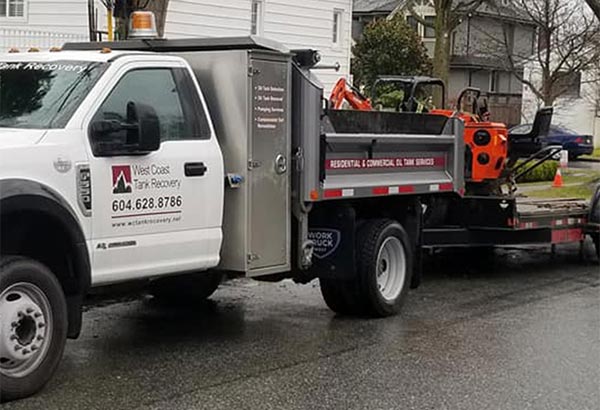 Fully Licensed and Insured
Fully Licensed and Insured Request an Oil Tank Scan
Request an Oil Tank Scan Request a Free Estimate
Request a Free Estimate

There is still the threat of oil tanks that are buried under properties across Metro Vancouver and other areas, often without the homeowners being aware of their existence.
Scanning your property for an oil tank is recommended if you aren’t sure whether you have one buried on your property or not, with an oil tank removal required if you are found to have one.
Here are the four steps to a successful oil tank removal, starting with the initial scanning process.
Step 1: Oil tank scan
The first stage of an oil tank removal is to have a professional conduct a scan of your property. This allows them to use an array of technology, such as advanced metal detection and ground penetrating radar, in order to determine whether you have a buried tank.
If there is no trace found, you can breathe a sigh of relief, with written documentation provided to advise of the all clear. This comes in very useful when selling or expanding your property, as many areas require this before either process can occur.
Step 2: Excavation and removal
The second step of the task is to undergo excavation and then begin the removal process. This should only be undertaken by a professional, as it can be a delicate and complex task. Once the oil tank removal has happened, it then needs to be disposed of, which is the next step in the oil tank removal process.
Step 3: Disposal
The disposal of the oil tank is very important, as the remnants can potentially contaminate the surrounding area. Disposing of the tank in a certified manner is essential, which is an area where professional oil tank removal companies excel.
Step 4: Soil Testing and Backfill
The last stage of the oil tank removal process is the testing of the soil and backfill, which is restoring the property back to its original state. This is another crucial part of the process, as the soil can be left contaminated if any leakage has previously occurred, so it must be checked.
In summary
As tanks begin to age and rust, they can corrode, causing them to leak. This can be a severe problem, as the homeowner is liable for any damage caused as a result, even if you aren’t aware of the oil tank in the first place. Getting an oil tank removal is therefore essential, if the scan does locate one buried under your property.